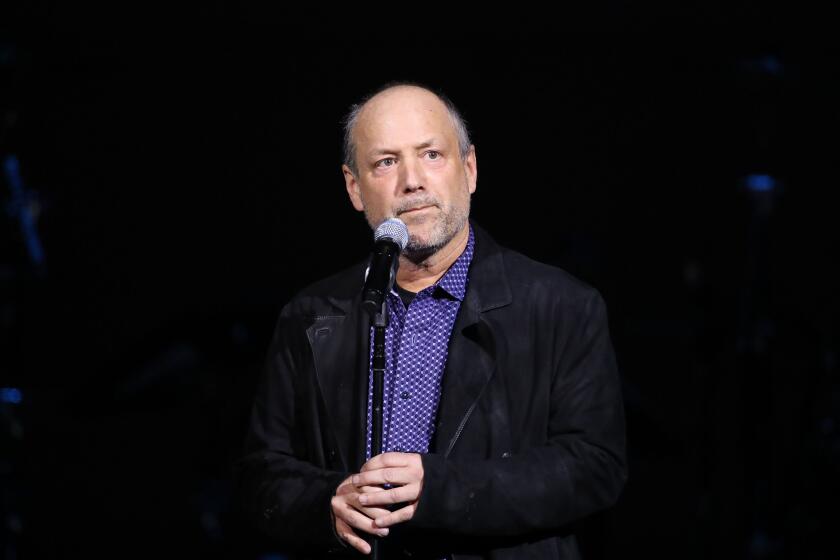Printasign to Emphasize Computers : Company’s Equipment Creates Corps of ‘Silent Salesmen’ at Point of Purchase
- Share via
Retailers call them the silent salesmen, as crucial for getting the customer to the cash register as any pitchman, billboard or newspaper ad.
These pervasive persuaders are called point-of-purchase signs. They can direct browsers to discounted items or spotlight the features of an appliance, as in: “Six-Slice Toaster. Handy Crumb Tray. High Pop-up. $49.99.”
Pacoima-based Reynolds Printasign is known among merchandisers as the leading maker of equipment for printing point-of-purchase signs. It lists stores as varied as Sears, Roebuck and Saks Fifth Avenue, Thrifty Drug and Crate & Barrel among its thousands of customers.
Reynolds Printasign’s products range from a $6,000 flatbed roller printer, with plastic letters that must be typeset by hand, to a $20,000 IBM PC-based system, which can easily standardize sign making for a big department store chain.
The company’s most popular product, called the Printasign, has set the industry standard. Essentially a hunt-and-peck lettering system priced at about $10,000, it is a variation of a device introduced in 1929 by the late Chicago entrepreneur Milt Reynolds, who saw a need for neat, uniform-looking signs in retail chains.
In June, Milt’s grandson, Thomas B. Reynolds, 32, became president of the company and took over responsibility for its daily operation. He succeeded his father, James M. Reynolds, 64, who remains chairman and chief executive.
Computer-Oriented Goals
Thomas Reynolds, who, like his father has a degree from Stanford, had been vice president for sales. He said that as president he intends to more fully develop the computer end of the business.
The junior Reynolds says signs are more important than ever because, to cut costs, retailers are using fewer salespeople. Moreover, he says, labels now have less information on them.
As a result, stores have been more attentive to their signs, retailers say. “Signs are the best way of telling the customer how something works, and why they should want to buy it,” said Peter Shyne, May Co.’s vice president for visual merchandising.
May Co., which uses uniform signs at its California outlets, operates a Reynolds Printasign computer system at its regional headquarters in North Hollywood and distributes the signs to its stores.
“We came up with the format, and they gave us technical capability,” Shyne said. “It’s state-of-the-art stuff. Nobody comes close to them.”
Reynolds Printasign, with sales last year of $6.5 million, claims to have more business than its three biggest competitors combined. (None of the competitors--Signpress of Galesburg, Ill., and two Chicago firms, Morgan Sign and Showcard Machine--would disclose their sales.)
Nevertheless, Reynolds Printasign grew slowly until quite recently. In 1929, Milt Reynolds sold 1,000 Printasigns at $1,000 each. As recently as 1983, sales were still under the $4-million mark.
When James Reynolds bought the company from his father in 1950, he moved it to a Pacoima site along San Fernando Road, hoping to take advantage of the railway freight line that divides the street. That may have been a miscalculation. Although Reynolds Printasign is still at that site--now surrounded by auto junkyards--the company has yet to receive or send any shipments by train.
Reynolds Printasign has almost always been profitable, Thomas Reynolds said. One exception was a period several years ago when computer research caused major expenses.
The company’s business is cyclical, slowing during economic slumps when few new stores open. Reynolds Printasign insulates itself somewhat from those cycles by providing customers with service and supplies, activities now accounting for nearly one-third of the firm’s revenue.
As in other small industries, the makers of sign printers disagree over the role of computers in their work. Signpress, for example, has decided not to sell computer systems, focusing instead on flatbed printers that sell for $500 to $6,500.
“We want the niche between hand-lettering and computerization,” said Executive Vice President Dewey Wright. “It’s only a matter of time before all the big stores have their own PCs and their own programmers. They won’t need us.”
Software, Printer Sales
Thomas Reynolds said, however, that half his computer-related sales are to stores that already have computers but still want software and printers. The company’s top-of-the-line $20,000 system consists of a personal computer, two sophisticated printers and software designed by an Arizona computer consultant.
The tried-and-true Printasign works simply. A letter puncher is moved by hand over an alphabetically arranged letter board. The operator finds the appropriate letter, then lowers a handle, making the impression on the sign.
Computers, however, provide an easier way to coordinate sign making. Sears, for example, recently bought a central computer from Reynolds Printasign for its Chicago offices that eventually will enable the retailer to print out signs via satellite at its regional offices.
Howard Reese, president of Morgan Sign, said Reynolds Printasign showed foresight by getting into computers in 1975. “They’ve been real smart spotting the trends in this business,” he said.
But Reese said his company has made up for lost time with its comparably priced Sperry system, which he claims is faster and more reliable than Reynolds Printasign’s units.
The computer era hasn’t yet revolutionized life for Reynolds Printasign and its 50 employees. The firm has only 280 computer-equipment customers, whereas about 3,000 use its Printasigns. But computer products provided nearly half of its sales last year.
More to Read
Inside the business of entertainment
The Wide Shot brings you news, analysis and insights on everything from streaming wars to production — and what it all means for the future.
You may occasionally receive promotional content from the Los Angeles Times.










